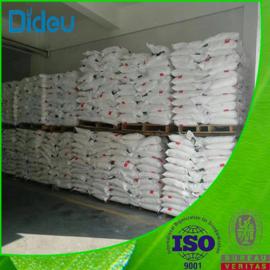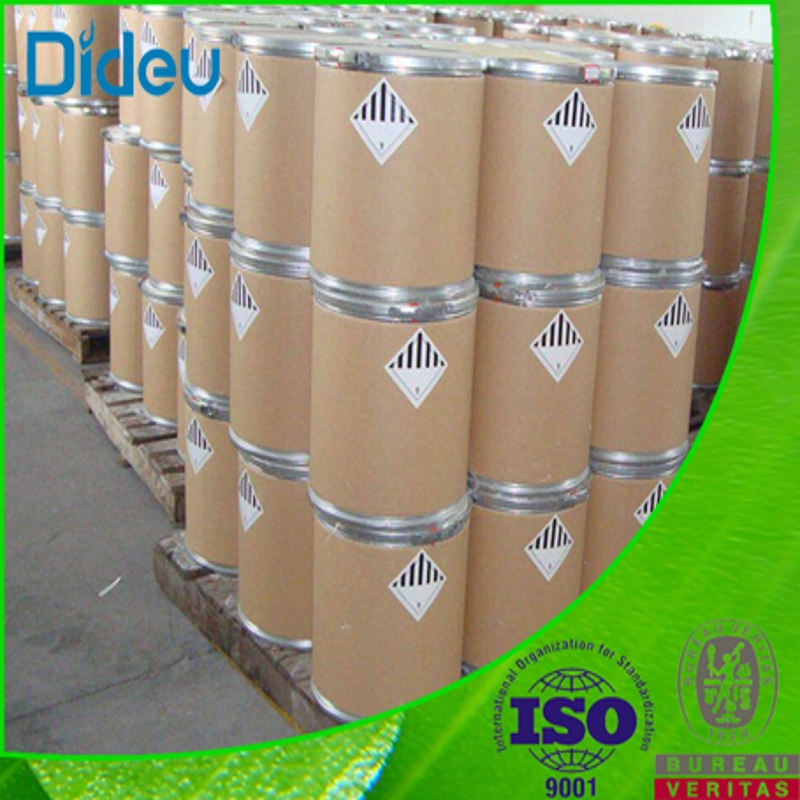-
Categories
-
Pharmaceutical Intermediates
-
Active Pharmaceutical Ingredients
-
Food Additives
- Industrial Coatings
- Agrochemicals
- Dyes and Pigments
- Surfactant
- Flavors and Fragrances
- Chemical Reagents
- Catalyst and Auxiliary
- Natural Products
- Inorganic Chemistry
-
Organic Chemistry
-
Biochemical Engineering
- Analytical Chemistry
-
Cosmetic Ingredient
- Water Treatment Chemical
-
Pharmaceutical Intermediates
Promotion
ECHEMI Mall
Wholesale
Weekly Price
Exhibition
News
-
Trade Service
Abstract Upper urothelial carcinoma (UTUC) is the third most common malignancy associated with Lynch syndrome (LS) Related literatures such as screening programs and screening protocols were analyzed and expected to provide urologists with more detailed information on LS and UTUC
.
The study was recently published in the European Urology Oncology journal
.
LS causes microsatellite instability.
Lynch syndrome (LS) was first described in 1966
.
LS is an autosomal dominant disorder characterized by a high susceptibility to multiple primary malignancies and an early age of onset
.
Genetically, LS is caused by germline mutations in one of the four DNA mismatch repair (MMR) genes (hMLH1, hMSH2, hMSH6, and hPMS2), or by hMSH2 silencing caused by hEPCAM germline mutations
.
hMSH2 was the most common LS-related gene (60%), followed by hMLH1 (30%) and hMSH6 (5%–8%)
.
The MMR signaling pathway affects DNA mismatch repair and leads to the accumulation of indels in the DNA microsatellite region, a phenomenon known as microsatellite instability (MSI)
.
Occurrence of LS-Associated Tumors From a clinical point of view, malignancy occurs when biallelic inactivation of the MMR gene occurs
.
Thus, in addition to genetic inactivation of the first allele, LS-related tumorigenesis requires a second acquired allele mutation
.
LS-related tumors include colorectal cancer (CRC, lifetime risk 80%–90%), followed by endometrial cancer (40%–60%), upper tract urothelial carcinoma (UTUC, 1%–28%), Ovarian cancer (1%–24%), gastric cancer (1%–13%), hepatobiliary cancer (1%–4%), skin cancer (1%–9%), and brain tumor (1%–3%)
.
METHODS AND MAIN RESULTS The study included retrospective studies, prospective cohort studies, reviews, and reviews of LS/UTUC-related morbidity, diagnosis, clinicopathological features, oncology outcomes, or screening protocols
.
The search strategy is shown in Figure 1
.
Relevant literature up to May 2021 was searched from Medline, Scopus, Google Scholar and Cochrane databases
.
Fig.
1 Flow chart of literature screening The research finally included 43 LS and UTUC related studies
.
01LS population risk of UTUC Six studies analyzed the cumulative lifetime risk or relative risk (RR) of UTUC in LS patients
.
Subgroup analysis showed that at age 70, the lifetime risk of UTUC in men and women was 0.
2%-9.
4% and 0.
1%-6.
0%, respectively
.
Four studies analyzed different genotypes, and hMSH2 carriers had a higher risk of developing UTUC compared with hMLH1 and hMSH6
.
The cumulative lifetime risk of developing UTUC at age 70 in hMSH2-mutant LS patients was 6.
9%, approximately 75 times that of the general population
.
Correspondingly, the risk of renal pelvis cancer or ureteral cancer was increased by 40-fold and 60-fold, respectively
.
02 The first primary cancer is the diagnosis of LS in UTUC patientsFig.
2 Flow chart of LS diagnosis in UTUC patients Three studies reported the clinicopathological features of UTUC patients diagnosed with LS
.
Treatment options for such patients include radical nephroureterectomy (RNU) followed by adjuvant chemotherapy
.
60% to 91% of cases had high-grade disease, and 40% to 49% of patients had pT≤1
.
Two studies directly compared clinicopathologic features and oncologic outcomes of hereditary and sporadic UTUC (Table 1)
.
Regarding long-term oncological outcomes, Audenet et al.
showed no significant difference in recurrence-free survival (RFS), cancer-specific survival (CSS), and overall survival (OS) between the two groups at a median follow-up of 3 years
.
The study by Hollande et al.
analyzed the outcomes of 112 patients with high-risk or locally advanced UTUC who received RNU and adjuvant therapy and showed that hereditary UTUC had significantly more CSS compared with sporadic UTUC at a median follow-up of 19 months (P= 0.
005) and OS (P < 0.
008)
.
Table 1 Clinicopathological characteristics of patients with hereditary UTUC compared with sporadic UTUC patients with LS-related UTUC were significantly younger compared with those with sporadic UTUC (62 vs 70 years, P < 0.
0001; 61 vs 69 years, P < 0.
0001).
= 0.
005), and no previous smoking history (P = 0.
03)
.
Furthermore, patients with LS-related UTUC exhibited a prevalent distribution of ureteral tumors: 51% vs 28% (P=0.
001) and 47% vs 18% (P=0.
01)
.
Table 2 Clinicopathological characteristics of UTUC in LS patients 03 Characteristics of UTUC in LS patients 15 studies reported the clinicopathological characteristics of UTUC in 250 LS patients
.
The median age of patients diagnosed with UTUC was between 56 and 67 years old
.
Female gender may be a contributing factor, accounting for about 46% to 71% of the total number of cases
.
Two studies reported symptoms of LS-related UTUC, including massive hematuria (63% and 58%, respectively) and renal colic (5%)
.
Six studies reported the site of UTUC: the ureter was more frequently involved than the renal pelvis, and multifocal was less common
.
Overall, pT≤1 patients accounted for 46%, and 1 (8%) patient had metastatic disease
.
04 Molecular testing Considering the diagnostic value of MSI detection and IHC, as well as feasibility and cost-effectiveness, the investigators recommend PCR for MSI detection in all LS patients (meeting EAU guidelines clinical criteria), reserving the use of IHC for the detection of high microsatellite instability Sexuality (H-MSI)
.
However, if the test results are negative, there is a strong clinical suspicion of LS, or in cases where tumor specimens are not available, the investigators recommend DNA sequencing of the MMR gene
.
Newly diagnosed LS patients may benefit from a multidisciplinary team that includes physicians from various specialties, and this population requires earlier and repeated screening for other primary tumors than the general population
.
For example, hMSH2 or hMLH1 mutation carriers should have colonoscopy twice a year starting at age 20-25 years, and hMSH6 or hPMS2 mutation carriers should have annual colonoscopies starting at age 30-35 years until age 75, and Annual transvaginal ultrasonography
.
In addition, given that LS is autosomal dominant, genetic counseling should be provided to all first-degree relatives, and relatives should be provided with appropriate screening protocols and follow-up
.
05 Screening of LS patients for UTUC Six studies made recommendations for UTUC screening in LS patients (Figure 3)
.
Figure 3.
Flow chart of UTUC screening in LS patients.
Different MMR genes have different risks of UTUC, and hereditary UTUC occurs at an early age.
Therefore, the researchers recommend that all LS patients should start screening from the age of 45 to 50, including annual urine testing.
Fluid analysis and urine cytology, and abdominal ultrasonography every 2 years
.
In addition, hMSH2 mutation carriers or LS patients with a family history of urothelial carcinoma (including UTUC or bladder cancer) should be examined more frequently, and abdominal ultrasonography or abdominal CT scans can be performed annually
.
Conclusion Urologists should identify patients at high risk for LS and conduct a comprehensive diagnosis, including molecular and genetic testing
.
Newly diagnosed LS patients should be referred to a multidisciplinary team, and first-degree relatives should be offered genetic counseling
.
References: C.
Lonati, A.
Necchi, J.
Gómez Rivas et al.
, Upper Tract Urothelial Carcinoma in the Lynch Syndrome Tumour Spectrum: A Com[1]prehensive Overview from the European Association of Urology - Young Academic Urologists and the Global Society of Rare Genitourinary Tumors, Eur Urol Oncol (2021), https://doi.
org/10.
1016/j.
euo.
2021.
11.
001







